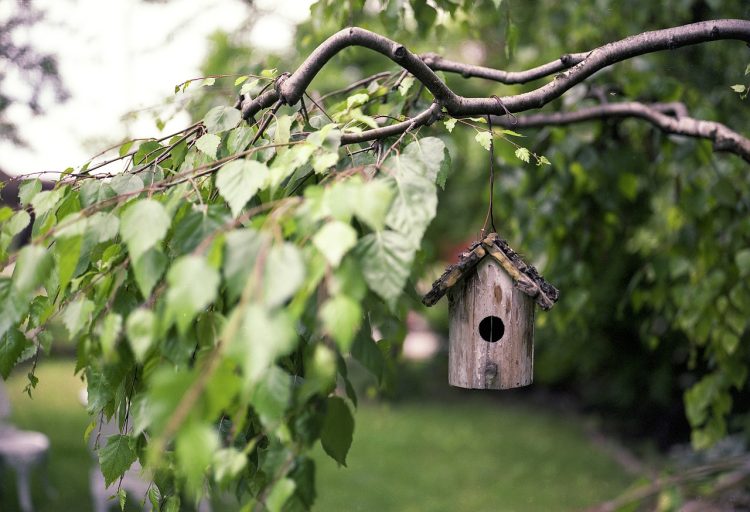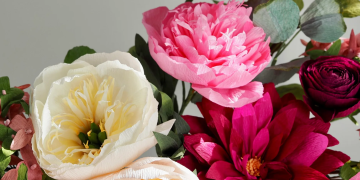Birds bring color, movement, and beautiful songs to your garden, creating a lively and natural environment. Attracting birds to your outdoor space is not only enjoyable but also beneficial for your garden, as many birds help control pests and pollinate plants. By providing the right food, water, shelter, and nesting opportunities, you can create a bird-friendly garden that draws a variety of feathered friends. This guide will show you how to make your garden a welcoming haven for birds all year round.
Provide a Variety of Bird Feeders
One of the best ways to attract birds to your garden is by offering a variety of bird feeders. Different bird species prefer different types of food, so providing a mix of feeders with seeds, suet, nectar, and fruits will attract a diverse range of birds. Tube feeders are great for small birds like finches, while platform feeders can accommodate larger birds like cardinals and blue jays. Suet feeders are ideal for woodpeckers, nuthatches, and other insect-eating birds.
Choose a high-quality birdseed mix that includes sunflower seeds, millet, and nyjer seeds to appeal to a wide variety of birds. Black-oil sunflower seeds are particularly popular with many species, as they are rich in energy and easy to eat. In addition to seed feeders, consider adding a nectar feeder to attract hummingbirds. Make a simple nectar solution by mixing four parts water with one part sugar—avoid using red dye, as it can be harmful to birds.
Offer Fresh Water
Birds need water for drinking and bathing, so providing a fresh water source is essential for attracting them to your garden. A birdbath is a simple way to offer water, but it’s important to keep it clean and filled with fresh water. Place the birdbath in a shaded area to keep the water cool and change it regularly to prevent the growth of algae and mosquitoes.
If possible, add a small fountain or dripper to your birdbath to create moving water, as birds are attracted to the sound of running water. In colder climates, consider using a heated birdbath or adding a birdbath heater during the winter to ensure that birds have access to water even when temperatures drop.
Plant Native Trees and Shrubs
Native trees and shrubs provide birds with natural food sources, shelter, and nesting sites. By planting native species, you can create a habitat that supports local bird populations and attracts a variety of species. Berry-producing shrubs like serviceberry, elderberry, and viburnum provide birds with nutritious food, while trees like oak, maple, and pine offer shelter and nesting opportunities.
Native plants also support insects that birds feed on, especially during the breeding season when they need extra protein to raise their young. Flowers like coneflowers, black-eyed Susans, and asters attract insects and produce seeds that birds love to eat. By creating a diverse garden with layers of trees, shrubs, and flowering plants, you can provide birds with everything they need to thrive.
Create Shelter and Nesting Sites
Birds need safe places to rest, hide from predators, and build their nests. Dense shrubs, hedges, and trees provide natural cover that helps birds feel secure. Planting evergreens like spruce, cedar, or holly can offer year-round shelter, especially during the winter months when deciduous trees have lost their leaves.
In addition to natural shelter, consider putting up birdhouses to provide nesting sites for cavity-nesting birds like bluebirds, chickadees, and wrens. When choosing a birdhouse, make sure it’s the right size for the species you want to attract, and place it in a quiet, sheltered area away from heavy foot traffic. Avoid birdhouses with perches, as they can make it easier for predators to access the nest.
Avoid Pesticides and Chemicals
Using pesticides and other chemicals in your garden can harm birds by poisoning their food sources and reducing the availability of insects. To create a bird-friendly environment, avoid using chemical pesticides and opt for natural pest control methods instead. Encourage beneficial insects, like ladybugs and lacewings, which help control pests without harming birds.
Creating a healthy garden ecosystem with a variety of plants can help keep pests in check naturally. By attracting birds to your garden, you’ll also have natural pest control, as many bird species feed on insects like aphids, caterpillars, and beetles.
Provide Nesting Materials
During the breeding season, birds are busy building nests to raise their young. You can help by providing nesting materials in your garden. Natural materials like twigs, dried grass, leaves, and moss are all useful for nest building. You can also offer pet fur, hair, or small pieces of cotton in a mesh bag or hang them from tree branches for birds to collect.
Avoid using synthetic materials like plastic or yarn, as they can be harmful to birds if ingested or tangled around their legs. By offering natural nesting materials, you can make your garden an attractive place for birds to build their homes and raise their young.
Create a Bird-Friendly Landscape
Designing your garden with birds in mind means creating a landscape that offers food, water, shelter, and nesting opportunities. Include a mix of plants that provide a variety of food sources throughout the year, such as berries, seeds, and nectar. Planting flowers that bloom at different times will ensure that birds have access to food from early spring through late fall.
Consider leaving some areas of your garden a little “wild” to provide natural cover and food sources. For example, leaving seed heads on flowers like coneflowers and sunflowers through the winter can provide birds with a valuable food source. Brush piles, fallen logs, and leaf litter can also create habitat for insects that birds feed on, as well as provide shelter for ground-dwelling birds like sparrows and towhees.
Attracting Birds Year-Round
To keep birds coming to your garden year-round, it’s important to provide food, water, and shelter throughout all four seasons. In the spring and summer, many birds are raising their young and need extra food and water. Planting a variety of flowering plants, shrubs, and trees will provide them with the resources they need during this busy time.
In the fall, berry-producing plants like dogwood, sumac, and hawthorn can provide migrating birds with the energy they need for their journey. Leaving seed heads on flowers and grasses can also help birds prepare for winter by providing them with high-energy food.
During the winter, when food is scarce, keep bird feeders filled with high-energy foods like suet, sunflower seeds, and peanuts. Providing a heated birdbath will ensure that birds have access to water, even when temperatures drop below freezing. Evergreen trees and shrubs will offer shelter from harsh weather and predators, helping birds stay safe and warm through the winter months.
Enjoy the Birds in Your Garden
Attracting birds to your garden is a rewarding experience that brings nature right to your doorstep. By providing a variety of food, fresh water, shelter, and nesting sites, you can create a bird-friendly environment that supports local bird populations and adds beauty and life to your outdoor space. Watching birds feed, bathe, and raise their young can be a source of joy and relaxation, reminding us of the importance of creating habitats where wildlife can thrive.










